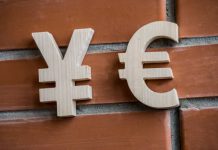Market movers today
Today’s highlight is the ZEW, which will give an early indication of the September PMIs next week. High frequency data suggests that the euro recovery has continued in September but at a slower pace. ZEW expectations have already shown a stellar rebound in recent months, so a small setback here would not be surprising. More interesting will be whether the current situation assessment continues to head up.
See Nordic section for Norway and Sweden market movers.
The 60 second overview
German politics. The CDU party decided to choose Angela Merkel’s successor as chancellor candidate on 4 December. Who comes first as new CDU party leader will also have important implications for the 2021 federal election and Germany’s future stance in fiscal and economic policies. Current front-runner, North Rhine-Westphalia Premier Armin Laschet, is very much seen as a continuity candidate from Merkel’s centrist course, while former caucus leader Friedrich Merz could steer the party more towards conservative policies. The third candidate, former environment minister Norbert Röttgen, is regarded as an outside bet.
Japanese politics. The ruling Liberal Democratic Party elected PM Abe’s successor yesterday. As expected, cabinet chief secretary and Abe’s right hand, Yoshihide Suga, was elected with a landslide victory. He will continue with Abenomics and will likely form another stimulus package later this year and support the Bank of Japan’s efforts to reach their inflation target. The question now remains whether he calls a snap-election to confirm his mandate as PM. Finance Minister Aso said yesterday that thought should be given to an early dissolution of parliament to avoid an election around the Tokyo Olympics next year.
Equities. Asian stock markets are up again this morning on the back of Chinese data showing the economic recovery is still going strong. August industrial output and retail sales both beat expectations. MSCI’s broadest index of Asia-Pacific shares outside Japan is up 1.1%. After a good run yesterday and last week, the Nikkei225 was down 0.6% on the back of a stronger yen, which weighs on exporters.
FI. We saw a broad-based modest rally in European fixed income by 1-3bp across the maturities. Notably the periphery bull flattened. ECB’s PEPP purchases have not picked up after summer and may not as long as the market-friendly environment persists. There was no specific reaction in the EU Supra and SSA space following the EU’s decision to postpone the inaugural EU SURE syndication by around one month to mid-October. The Irish bonds continued to underperform peers (albeit only by 1bp yesterday) as Brexit turmoil has picked up again.
FX. USD weakened yesterday across the board with EUR/USD moving higher towards 1.19 and USD/CHF and USD/JPY both moving lower. GBP strengthened against both USD and EUR without any obvious trigger amid still high Brexit uncertainty.
Credit. Credit markets enjoyed a good run yesterday, with iTraxx Xover tightening 8bp to 318bp and Main going 1bp tighter to 55bp.
Nordic macro and markets
Sweden. Two things on the agenda; firstly NIER releases an updated (extra-) survey on how business turnover has been affected by the coronavirus, secondly SCB releases August unemployment data. We expect a small decline from 9.2% to 9.0% (seasonally adjusted) as young people, of which many have been out of a job during summer, return to schools and universities.
Norway. Norges Bank’s regional network survey is normally the most important business cycle indicator in Norway, but the extreme changes in activity levels due to the pandemic – both the initial slide and the subsequent rebound – have made it much harder than usual to read leading indicators of this kind. For one thing, it is unclear whether firms are comparing the situation now with the recent period or with a more normal situation. For another, GDP is likely to grow 4-5% q/q in Q3, which is ‘out of scope’ given the way the index is calculated. On this occasion, therefore, we will set greater store by the qualitative impression the report gives than by the quantitative information it contains.













